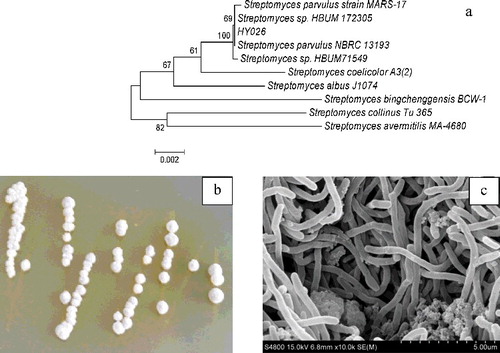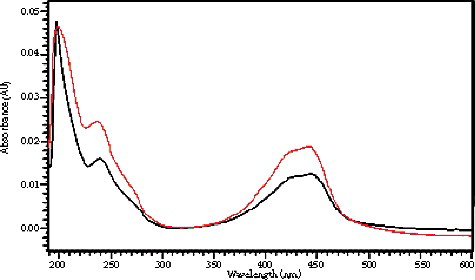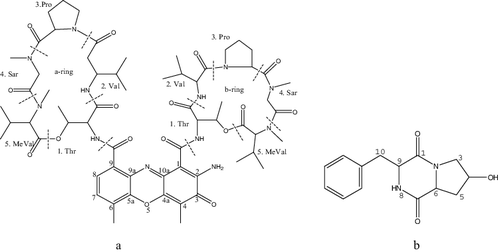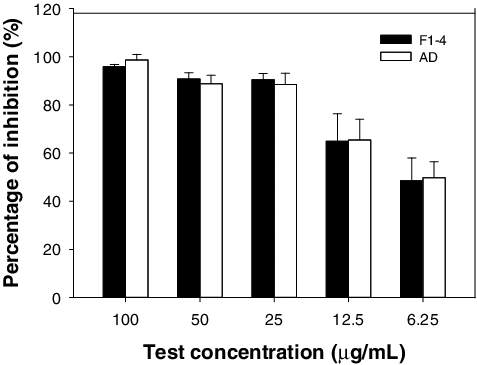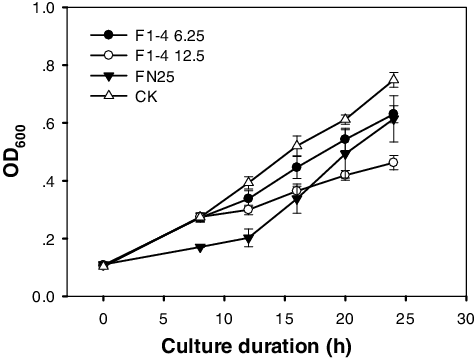Figures & data
Table 1. Anti-quorum sensing activity of several actinomycetes strains in disc diffusion assay and pigment inhibition assay.
Figure 2. The biofilm formation inhibitive activity of spent culture medium of HY026 against four bacterial strains Pseudomonas aeruginosa PAO1, Staphylococcus aureus 95005, Micrococcus luteus 95006 and Ruegeria sp. 01008. The test concentration was 10%, 20% and 50% spent culture medium (v/v). Data plotted are mean ± SD of four replicates per treatment.
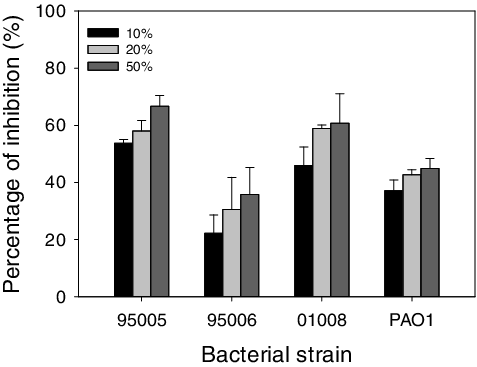
Figure 3. The FESEM photographs of Pseudomonas aeruginosa PAO1 biofilms formed on glass cover slip. a: biofilm control, b–d: samples treated with HY026 spent medium (10%, 20% and 50%).
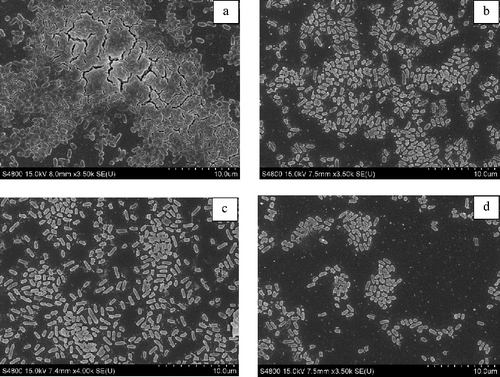
Figure 4. The growth, metabolites production and anti-quorum sensing activity variation of the strain Streptomyces parvulus HY026. The growth of isolate is indicated by the dry weight of bacterial cell collected from 100 mL liquid cultures, the metabolites production is indicated by the dry weight of crude extracts extracted from 100 mL liquid cultures, while the activity is indicated by the pigment inhibition zone of each sample against C. violaceum at the concentration of 250 μg/disc. Data plotted are mean ± SD of three replicates per treatment.


